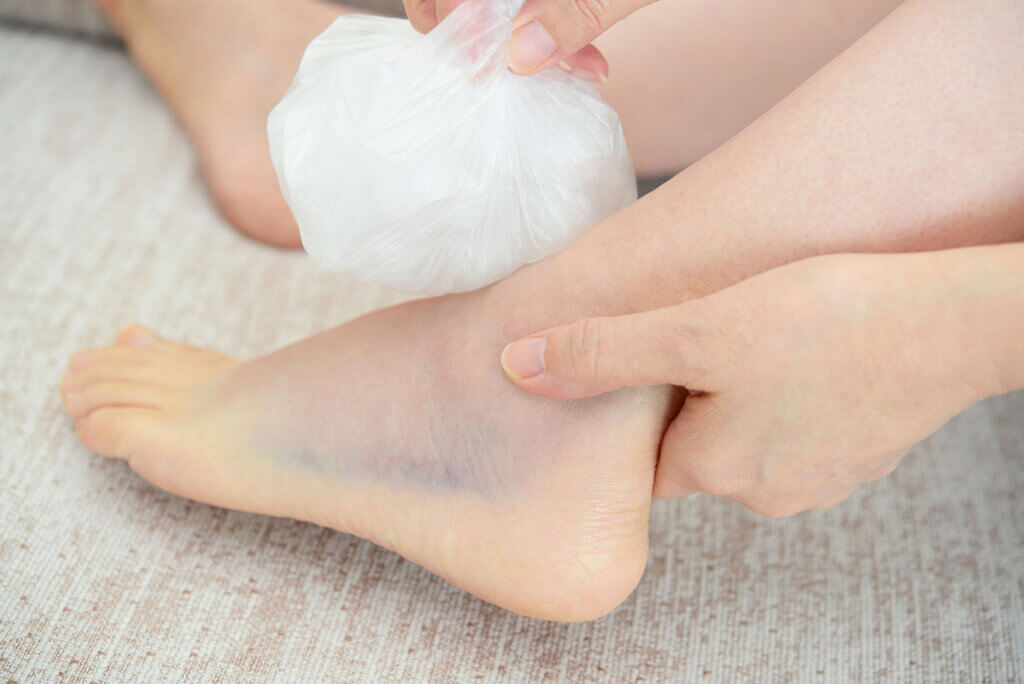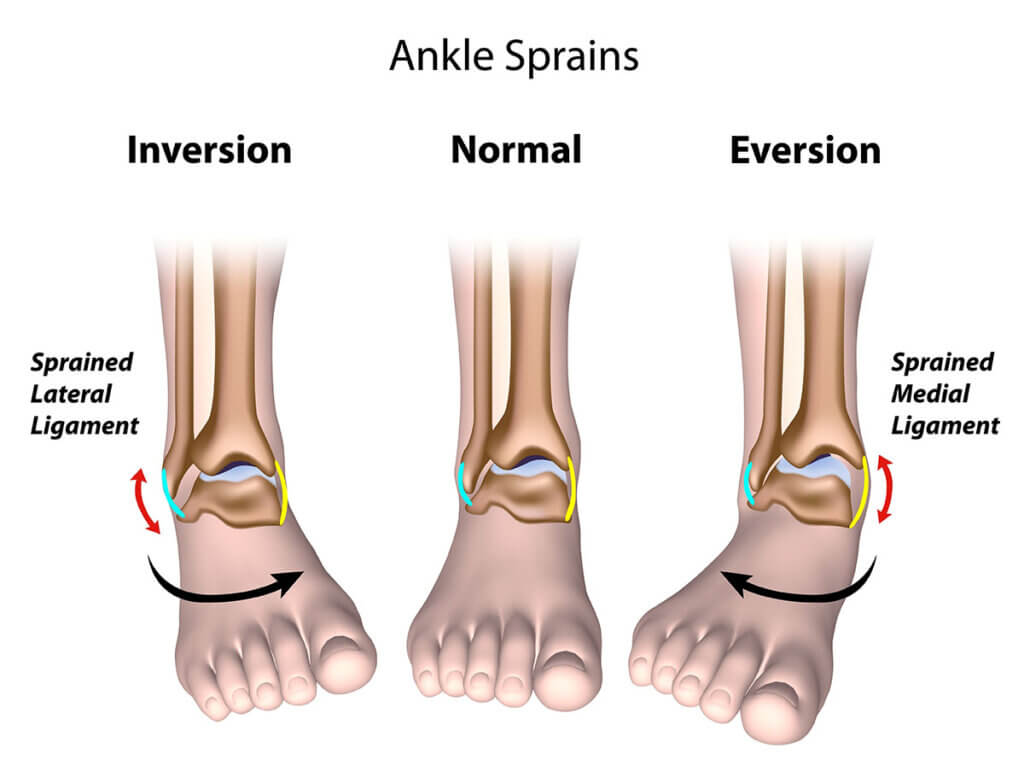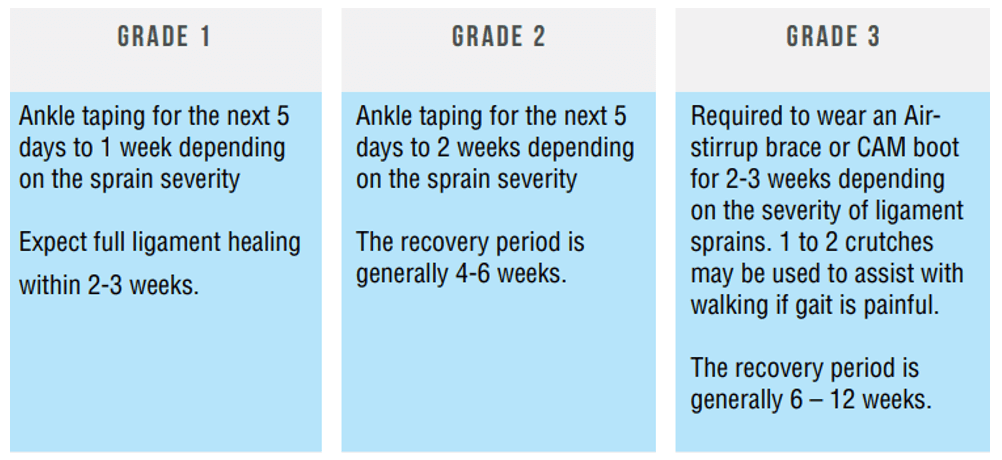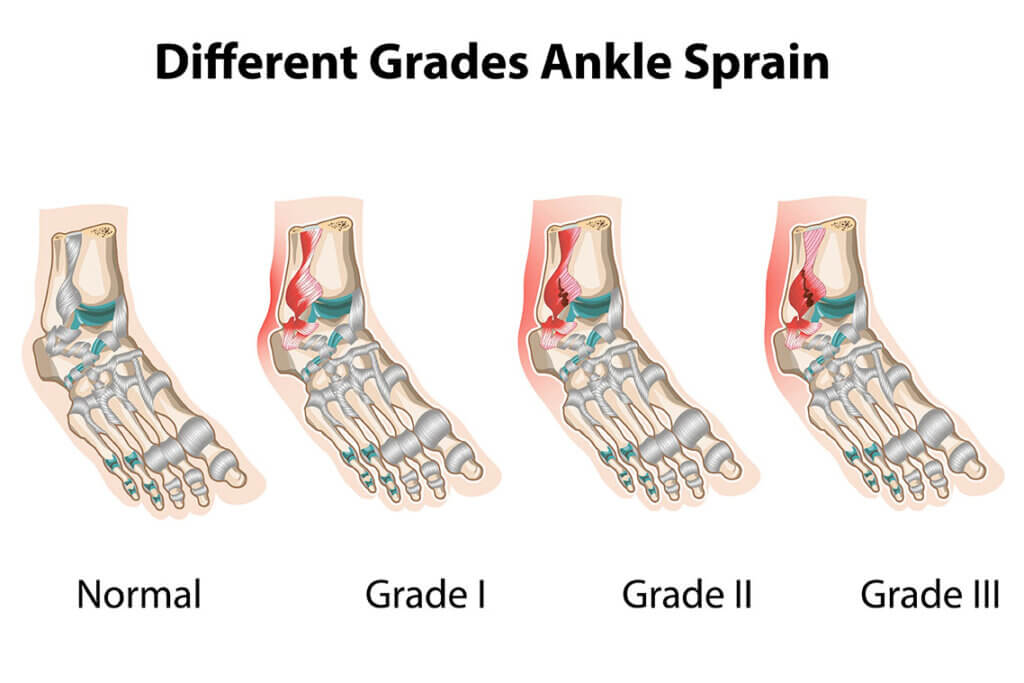What should I do after an Ankle Sprain?
What do I do next and when can I get back into training?
What happens when I sprain my ankle?
Ankle sprains are among the most common musculoskeletal injuries in sport as well as day to day life, and Lateral ankle sprains in particular account for 85% of all sprains reported. The mechanism of injury for a lateral ankle sprain usually involves excessive inversion-internal rotation of the ankle either with or without plantarflexion. The most frequently damaged ligament of the lateral ankle is the Anterior Talofibular ligament due to it having the lowest load tolerance of the three ligaments. In more severe cases, the Calcaneofibular ligament (CFL), Anterior Inferior Tibiofibular Ligament (AITFL), Posterior Inferior Tibiofibular Ligament (PITFL) or even the Medial Deltoid Ligament are involved.
For athletes, Average return to sport time after a lateral ankle sprain can be between 2-4 weeks. However, without comprehensive rehabilitation, most people often find they are struggling with re-occurrence of the injury or other long-term problems such as Chronic Ankle Instability- characterized by recurrent ankle sprains, feelings of ‘giving way’ and perceived instability. Recurrent instability of the ankle, and any joint of the body, is even an important contributor to earlier onset of osteoarthritis later in life.
Current evidence states that exercise-based rehabilitation reduces the risk of recurrent ankle sprains by up to 40% compared to conservative care or no treatment intervention. More research is needed to discover optimal training volumes and intensities during rehabilitation as everyone’s needs are unique, however so far there is no significant correlation between various training volumes and the likelihood of re-injury. Therefore, in MOST CASES, the more the better!




Phases of functional rehab
Current evidence for exercise-based rehab is largely dependent on the grade of the injury (Grade 1, 2, or 3), the goals of the patient and what sport or exercise regime they intend to return to. During rehabilitation, a good way of determining if you are coping with progressions in rehab is based on your symptoms, such as pain and swelling. If you are noticing your ankle is becoming quite swollen and sore after exercises, it is likely you have overdone it or progressed in your rehab too soon. The Physiotherapy guidelines for ankle sprain rehabilitation are as follows:
To progress through this protocol as fast as possible with minimal problems, you should be able to maintain your dorsiflexion range (pulling your toes up to your face) and should be tolerating exercises with minimal adverse effects i.e. Pain and swelling for up to 72hrs after exercises.
Phase 1: Early Rehab
- Grade 1: 3-5 days
- Grade 2: 5-10 days
- Grade 3: 2-3 weeks
Phase 2: Strengthening Phase
- Grade 1: 5-10 days
- Grade 2: 2-3 weeks
- Grade 3: 3-4 weeks.
Phase 3: Functional Strengthening
- Grade 1: 10 days +
- Grade 2: 2-3 weeks +
- Grade 3: 3-4 weeks
Phase 4 and 5: Return to sport testing and sport specific training/agility
- During this phase, a variety of tests can be used by Physiotherapists to assess whether a patient is ready to return to sport. This usually involved a lot of hopping and landing (plyometrics), as well as balance and proprioception-based exercise to determine asymmetries or strength deficits between your left and right sides.
- To pass this phase in rehabilitation and successfully return to sport, you would ideally need to achieve 95% symmetry between both sides on all strength, balance, and agility tests conducted. Testing parameters and the selection of tests would also depend on your goals as a patient and what sport you are returning to.
https://www.ahsmp.com/wp-content/uploads/2019/12/ANKLE-SPRAIN.pdf
Leighton Milburn – Physiotherapist
